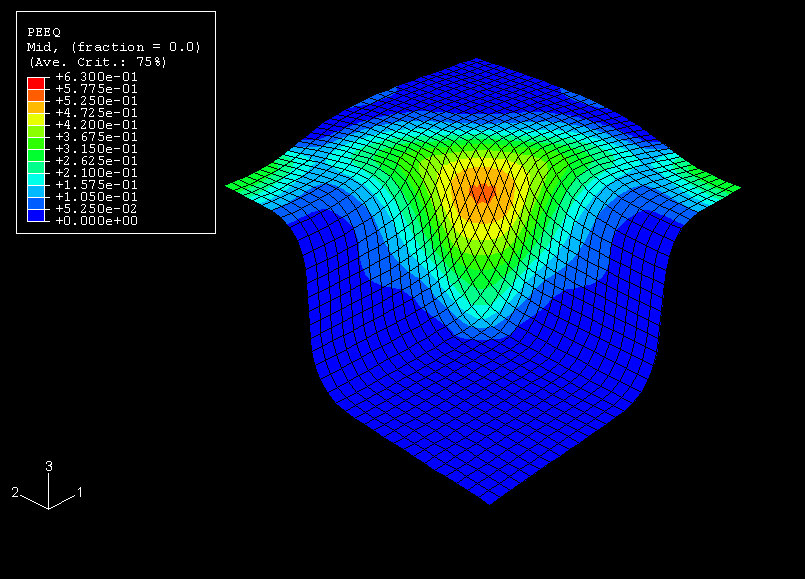

Five benchmark tests including one element tests, necking of a circular bar and 2D and 3D Taylor impact tests show the efficiency and robustness of the proposed algorithm and confirm the improved efficiency in terms of precision, stability and solution CPU time. The complete method of how to implement a user-defined elastoplastic material model using the radial return mapping integration scheme is presented in details with the application to the widely used Johnson–Cook constitutive law. Corrector term of the radial return scheme is obtained through the implementation of a safe and robust Newton–Raphson algorithm able to converge even when the piecewise defined hardening curve is not derivable everywhere. This more complex process allows us to obtain more precise results with only a slight increase of the total computational time. In the present paper, while the Abaqus/Explicit uses an explicit time integration scheme, the implicit radial return mapping algorithm is used to compute the plastic strain, the plastic strain rate and the temperature at the end of each increment instead of the widely used forward Euler approach.

* e-mail: paper describes the development of an efficient and robust numerical algorithm for the implementation of elastoplastic constitutive laws in the commercial non-linear finite element software Abaqus/Explicit through a VUMAT FORTRAN subroutine.

Laboratoire Génie de Production, Université de Toulouse, INP-ENIT,


 0 kommentar(er)
0 kommentar(er)
